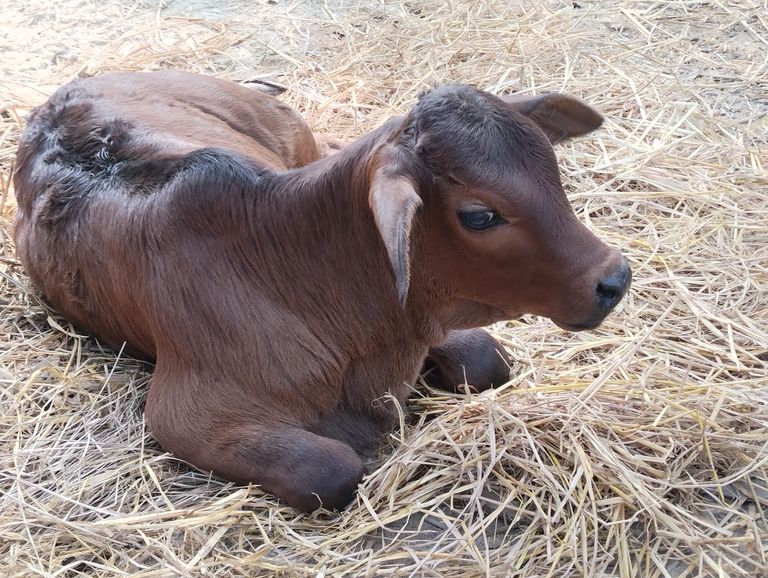
How to Take Care of a Newborn Calf A Comprehensive Guide.
Caring for a newborn calf is crucial for its healthy growth and development. A well-maintained calf not only grows into a strong and productive cow or bull but also contributes significantly to the overall efficiency of a farm. In this blog, we will discuss the essential steps and practices for proper calf care, covering everything from birth to weaning.
- Preparing for the Birth
Before the calf is born, ensure that the birthing area is clean, dry, and free of any harmful objects or substances. This minimizes the risk of infections and complications.
Keep the mother cow in a well-ventilated, comfortable space.
Monitor the cow for signs of labor, such as restlessness, frequent lying down, or clear discharge.
Keep essential birthing supplies, such as clean towels, disinfectants, and iodine, ready.
- Immediate Care After Birth
a. Clearing Airways
Once the calf is born, ensure its airways are clear. Remove any mucus or fluid from its nose and mouth using a clean cloth or suction bulb.
b. Stimulating Breathing
If the calf isn’t breathing, gently rub its body with a dry towel. This stimulates circulation and helps initiate breathing.
c. Navel Care
Disinfect the umbilical cord stump with iodine or a similar antiseptic to prevent infections.
- Feeding Colostrum
Colostrum, the first milk produced by the mother, is critical for the calf's immunity. It contains antibodies and nutrients that protect the calf from diseases.
Feed colostrum within the first two hours of birth for maximum absorption.
The calf should consume 10% of its body weight in colostrum within the first 24 hours.
- Providing a Clean Environment
A hygienic environment is essential to prevent illnesses.
Use clean, dry bedding in the calf’s pen. Straw or sawdust works well.
Ensure proper ventilation without exposing the calf to drafts.
Regularly clean and disinfect feeding bottles, buckets, and pens.
- Proper Feeding Practices
After the colostrum phase, transition the calf to regular feeding.
Use milk replacers or whole milk for feeding, depending on availability.
Feed the calf at regular intervals, maintaining a consistent schedule.
Introduce calf starter feed at around one week of age to promote rumen development.
- Hydration and Electrolytes
Calves are susceptible to dehydration, especially if they have diarrhea.
Provide clean, fresh water at all times.
If signs of dehydration appear, offer electrolyte solutions to restore fluids and minerals.
- Vaccinations and Health Checks
Regular health monitoring is essential for a healthy calf.
Consult a veterinarian for a vaccination schedule tailored to your region and farm conditions.
Deworm calves regularly to prevent parasite infestations.
Observe the calf for signs of illness, such as lethargy, diarrhea, or loss of appetite, and seek veterinary assistance if needed.
- Socialization and Comfort
A stress-free environment promotes better growth.
Allow the calf to interact with other calves in small groups to encourage social behavior.
Handle the calf gently to build trust and minimize stress.
- Weaning the Calf
Weaning is a significant milestone in a calf’s life.
Gradually reduce milk feeding while increasing solid feed intake.
Ensure the calf is consuming at least 1.5-2 pounds of starter feed daily before complete weaning.
Wean the calf at around 8-12 weeks, depending on its growth and health.
- Regular Monitoring and Record-Keeping
Track the calf’s weight, feed intake, and health milestones. This helps in identifying any issues early and ensures optimal growth.
Final Thoughts
Taking proper care of a newborn calf is a rewarding responsibility that requires dedication and attention to detail. By following these steps, you can ensure the calf grows into a healthy and productive animal, contributing to the success of your farm.
Investing time and effort in calf care not only enhances their well-being but also ensures long-term benefits for your livestock operation.
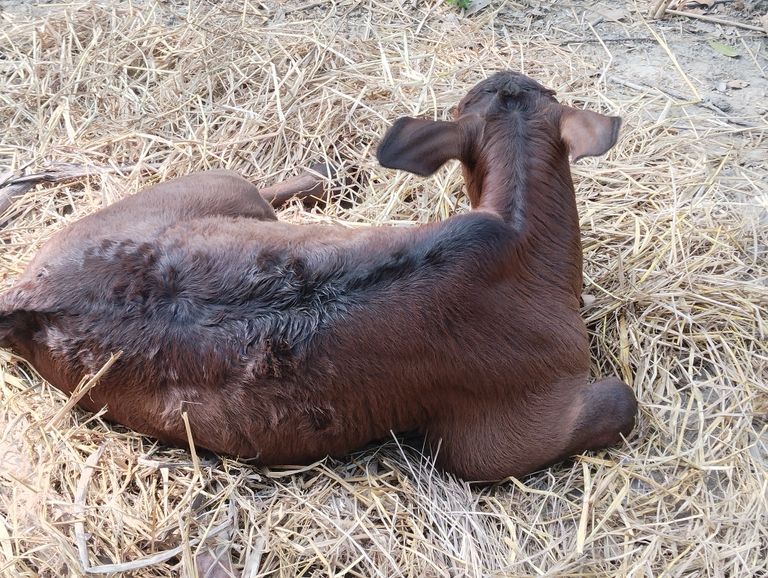
The Essential Diet for Calves: A Guide to Proper Nutrition
Raising healthy calves is essential for any dairy or beef farming operation. A well-planned diet ensures the calf grows strong, develops a robust immune system, and transitions smoothly into adulthood. In this blog, we’ll explore the essential components of a calf’s diet, nutritional requirements, and feeding practices to ensure optimal growth and health.
Why Proper Nutrition is Crucial for Calves
The early stages of a calf's life are critical for its overall development. Proper nutrition directly impacts their weight gain, muscle growth, and future productivity, whether as a dairy or beef animal. A balanced diet also minimizes the risk of diseases and ensures higher survival rates.
Key Components of a Calf’s Diet
- Colostrum: The First Meal
Colostrum is the first milk produced by the cow after giving birth. It is rich in antibodies, essential nutrients, and energy.
Importance: It boosts the calf’s immune system and provides protection against diseases.
Feeding Time: Calves should receive colostrum within the first 1-2 hours of life, and continue for the first 3 days.
- Milk or Milk Replacer
After colostrum, calves require milk or a high-quality milk replacer.
Milk Options: Whole milk or commercially formulated milk replacers.
Feeding Amount: Typically, 8-10% of the calf's body weight daily.
Frequency: Split into two or three feedings a day to aid digestion and prevent overfeeding.
- Starter Feed
Introducing calf starter feed by the second week encourages rumen development.
Composition: High in protein (16-20%) and energy, with easily digestible grains like corn and oats.
Amount: Offer small quantities initially and increase as the calf begins to consume more.
- Water
Fresh, clean water is essential from day one.
Why It Matters: Water supports hydration and helps digest solid feeds like starter grains.
Availability: Ensure unrestricted access at all times.
- Hay or Forage
By the fourth week, calves can start consuming high-quality hay or forage.
Type: Soft, leafy hay like alfalfa or grass hay is ideal.
Benefits: Promotes rumen function and adds fiber to the diet.
Feeding Schedule for Calves
- 0-3 Days:
Colostrum: 4 liters per day divided into 2-3 feedings.
- 4-10 Days:
Milk or milk replacer: 2 liters per feeding, 2-3 times daily.
Introduce fresh water and starter feed in small amounts.
- 2-8 Weeks:
Milk: Gradually reduce after week 6.
Starter feed: Increase consumption up to 1.5-2 kg/day.
Hay: Introduce slowly, focusing on quality.
- 8 Weeks and Beyond:
Transition to solid feeds entirely.
Offer a mix of hay, grains, and calf grower feeds.
Nutritional Needs of Calves
- Protein: Essential for muscle development. Aim for 16-20% protein in starter feed.
- Energy: Provided through milk, grains, and fat in the diet.
- Fiber: Supports rumen function; introduced via hay and forage.
- Minerals and Vitamins:
Calcium and phosphorus for bone growth.
Vitamins A, D, and E for immune health and development.
- Electrolytes: During periods of heat stress or diarrhea, provide electrolyte solutions to maintain hydration.
Common Feeding Mistakes to Avoid
- Insufficient Colostrum: Delayed or inadequate colostrum feeding can lead to weak immunity.
- Overfeeding: Overloading milk or grains can upset digestion and cause scours (diarrhea).
- Poor Hygiene: Dirty feeding equipment or water can lead to infections.
- Inconsistent Feeding Schedule: Maintaining a regular feeding routine is crucial for digestive health.
Tips for Healthy Calves
Monitor Growth: Weigh calves regularly to track their progress.
Vaccinate on Time: Follow a proper vaccination schedule to protect against diseases.
Provide a Stress-Free Environment: Avoid overcrowding and ensure adequate ventilation.
Conclusion
Providing the right diet for calves is an investment in their future productivity and health. Starting with colostrum, transitioning to milk and starter feed, and eventually introducing solid feeds ensures they grow into healthy, high-performing animals. By following proper feeding practices, you can set the foundation for their success and your farm’s profitability.
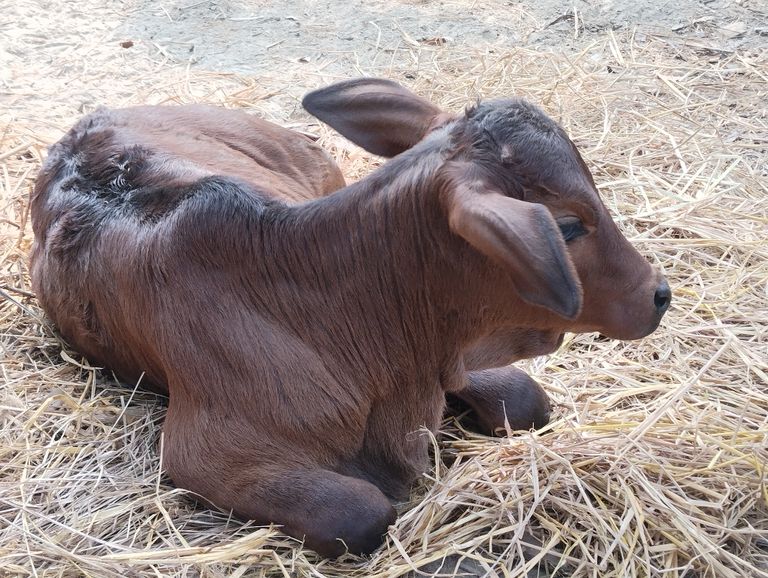
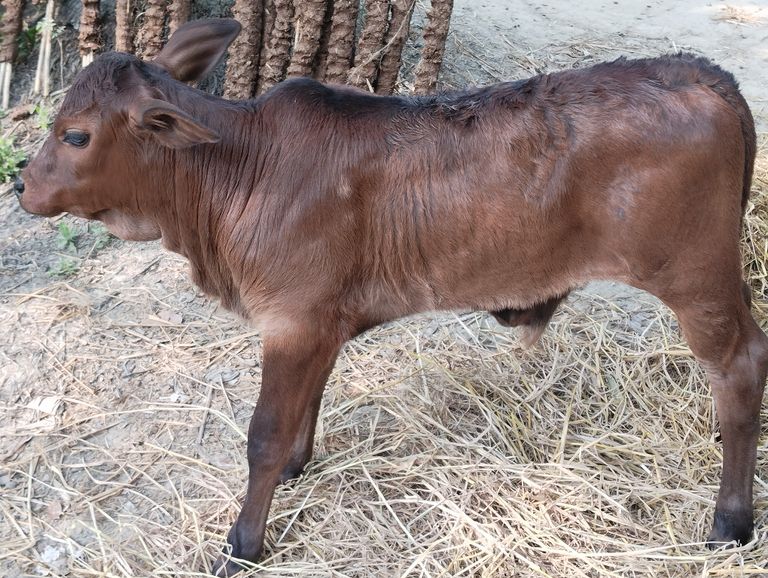
Nutritional Needs and Feeding Guide for Dairy Cows
Proper feeding is crucial for dairy cows to ensure their health, milk production, and overall well-being. In this blog, we’ll explore the types of food essential for dairy cows, the benefits of each type, and tips for providing a balanced diet.
Importance of Proper Nutrition for Dairy Cows
Dairy cows require a well-balanced diet to:
- Maintain Health: Proper nutrition boosts immunity and prevents diseases.
- Enhance Milk Production: A balanced diet improves the quantity and quality of milk.
- Support Reproductive Health: Nutrition affects fertility and calving success.
- Increase Longevity: Well-fed cows live longer and perform better over time.
Essential Nutrients for Dairy Cows
- Energy-Rich Foods
Energy is vital for milk production and maintaining body weight.
Sources: Maize, barley, wheat, molasses, and energy-rich commercial feed.
Benefits: Provides stamina, supports metabolic functions, and promotes healthy growth.
- Protein-Rich Foods
Proteins are essential for milk production, muscle development, and repair.
Sources: Soybean meal, cottonseed meal, alfalfa, and legumes.
Benefits: Enhances milk protein content and supports overall growth.
- Fiber-Rich Roughage
Roughage ensures proper digestion and gut health.
Sources: Green fodder (like Napier grass and maize fodder), dry fodder (straw and hay), and silage.
Benefits: Promotes healthy digestion, reduces bloating, and balances gut microflora.
- Vitamins and Minerals
Vitamins and minerals are critical for maintaining immunity, reproductive health, and milk production.
Sources: Mineral blocks, supplements, and fortified feeds.
Essential Elements: Calcium, phosphorus, magnesium, and vitamins A, D, and E.
Benefits: Prevents deficiencies and supports bone strength and lactation.
- Water
Clean and sufficient water is as important as food for dairy cows.
Requirement: A lactating cow may need 50–100 liters of water daily.
Benefits: Regulates body temperature and supports milk production, which contains 87% water.
Types of Feeds for Dairy Cows
- Green Fodder
Fresh, nutrient-rich fodder is a primary food source.
Examples: Napier grass, hybrid sorghum, maize fodder.
Feeding Frequency: Twice daily.
- Silage
Silage is fermented green fodder, stored for use during dry seasons.
Preparation: Chopped green fodder is stored in airtight silos for fermentation.
Benefits: Rich in nutrients, easily digestible, and available year-round.
- Concentrate Feed
Concentrates are high-energy, nutrient-dense supplements.
Examples: Grain mixtures, oilseed cakes, and bran.
Purpose: Boosts energy and balances the diet during peak lactation.
- By-Products
Agricultural by-products can supplement the diet cost-effectively.
Examples: Wheat bran, rice bran, molasses, and cottonseed hulls.
Benefits: Reduces feed costs while providing essential nutrients.
Feeding Schedule for Dairy Cows
A proper feeding schedule helps optimize digestion and milk production.
Morning: Offer fresh green fodder and water.
Midday: Provide concentrate feed and silage.
Evening: Offer dry fodder (straw or hay) and clean water.
Tips for Feeding Dairy Cows
- Ensure Freshness: Always provide fresh, clean feed and water.
- Avoid Overfeeding: Excess feed can lead to digestive issues.
- Use Balanced Rations: Consult a veterinarian or nutritionist to create a balanced diet.
- Feed According to Production: Adjust feed quantity based on milk yield and lactation stage.
- Monitor Health: Regularly check for signs of deficiencies or illness.
Common Feeding Mistakes to Avoid
- Inadequate Water Supply: Dehydration can severely impact milk production.
- Skipping Mineral Supplements: Deficiencies can lead to health and fertility issues.
- Poor Storage: Store feed properly to prevent spoilage and contamination.
- Irregular Feeding Times: Maintain consistency in feeding schedules.
Feeding dairy cows a balanced, nutritious diet is essential for their health, productivity, and longevity. By understanding their nutritional needs and following proper feeding practices, farmers can ensure optimal milk production and profitability. Always consult an expert for personalized feeding plans and stay updated on best practices for dairy farming.
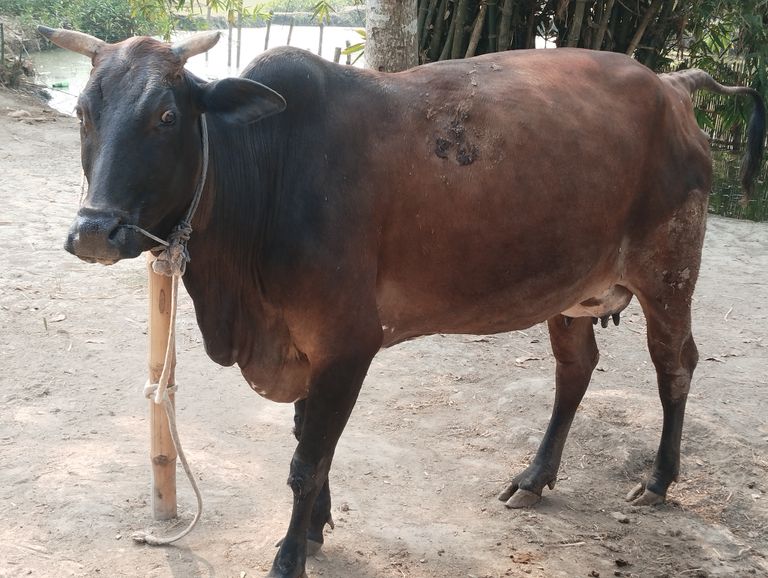
Nutritional Needs and Feeding Guide for Dairy Cows
Proper feeding is crucial for dairy cows to ensure their health, milk production, and overall well-being. In this blog, we’ll explore the types of food essential for dairy cows, the benefits of each type, and tips for providing a balanced diet.
Importance of Proper Nutrition for Dairy Cows
Dairy cows require a well-balanced diet to:
- Maintain Health: Proper nutrition boosts immunity and prevents diseases.
- Enhance Milk Production: A balanced diet improves the quantity and quality of milk.
- Support Reproductive Health: Nutrition affects fertility and calving success.
- Increase Longevity: Well-fed cows live longer and perform better over time.
Essential Nutrients for Dairy Cows
- Energy-Rich Foods
Energy is vital for milk production and maintaining body weight.
Sources: Maize, barley, wheat, molasses, and energy-rich commercial feed.
Benefits: Provides stamina, supports metabolic functions, and promotes healthy growth.
- Protein-Rich Foods
Proteins are essential for milk production, muscle development, and repair.
Sources: Soybean meal, cottonseed meal, alfalfa, and legumes.
Benefits: Enhances milk protein content and supports overall growth.
- Fiber-Rich Roughage
Roughage ensures proper digestion and gut health.
Sources: Green fodder (like Napier grass and maize fodder), dry fodder (straw and hay), and silage.
Benefits: Promotes healthy digestion, reduces bloating, and balances gut microflora.
- Vitamins and Minerals
Vitamins and minerals are critical for maintaining immunity, reproductive health, and milk production.
Sources: Mineral blocks, supplements, and fortified feeds.
Essential Elements: Calcium, phosphorus, magnesium, and vitamins A, D, and E.
Benefits: Prevents deficiencies and supports bone strength and lactation.
- Water
Clean and sufficient water is as important as food for dairy cows.
Requirement: A lactating cow may need 50–100 liters of water daily.
Benefits: Regulates body temperature and supports milk production, which contains 87% water.
Types of Feeds for Dairy Cows
- Green Fodder
Fresh, nutrient-rich fodder is a primary food source.
Examples: Napier grass, hybrid sorghum, maize fodder.
Feeding Frequency: Twice daily.
- Silage
Silage is fermented green fodder, stored for use during dry seasons.
Preparation: Chopped green fodder is stored in airtight silos for fermentation.
Benefits: Rich in nutrients, easily digestible, and available year-round.
- Concentrate Feed
Concentrates are high-energy, nutrient-dense supplements.
Examples: Grain mixtures, oilseed cakes, and bran.
Purpose: Boosts energy and balances the diet during peak lactation.
- By-Products
Agricultural by-products can supplement the diet cost-effectively.
Examples: Wheat bran, rice bran, molasses, and cottonseed hulls.
Benefits: Reduces feed costs while providing essential nutrients.
Feeding Schedule for Dairy Cows
A proper feeding schedule helps optimize digestion and milk production.
Morning: Offer fresh green fodder and water.
Midday: Provide concentrate feed and silage.
Evening: Offer dry fodder (straw or hay) and clean water.
Tips for Feeding Dairy Cows
- Ensure Freshness: Always provide fresh, clean feed and water.
- Avoid Overfeeding: Excess feed can lead to digestive issues.
- Use Balanced Rations: Consult a veterinarian or nutritionist to create a balanced diet.
- Feed According to Production: Adjust feed quantity based on milk yield and lactation stage.
- Monitor Health: Regularly check for signs of deficiencies or illness.
Common Feeding Mistakes to Avoid
- Inadequate Water Supply: Dehydration can severely impact milk production.
- Skipping Mineral Supplements: Deficiencies can lead to health and fertility issues.
- Poor Storage: Store feed properly to prevent spoilage and contamination.
- Irregular Feeding Times: Maintain consistency in feeding schedules.
Feeding dairy cows a balanced, nutritious diet is essential for their health, productivity, and longevity. By understanding their nutritional needs and following proper feeding practices, farmers can ensure optimal milk production and profitability. Always consult an expert for personalized feeding plans and stay updated on best practices for dairy farming.
Re🤬eD
Essential
Meaning 🥓